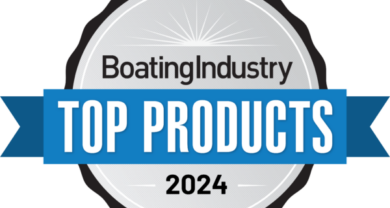The fuels and additives market adjusts focus as ethanol repair issues become less prominent
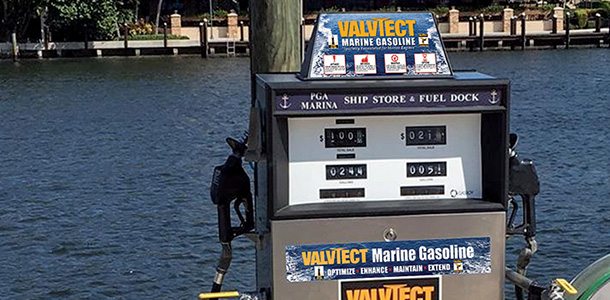
Over the past decade, the fuels and additives market has been heavily focused on ethanol in gasoline: what it does to fuel systems, how to raise consumer awareness of its potential dangers, and developing products to meet the market need.
And while consumer awareness of ethanol is still a market focus, it is not the same driving message it used to be.
“The catastrophes we saw when ethanol fuel first came in the market in 2004-2006, we’re past that learning curve,” said Greg Dornau, executive vice president of Star brite.
Issues related to tank compatibility with E10 have declined in the past years as many older systems and boats are being retired and replaced with new engines, which were built to work with E10.
“New boats don’t have that problem because newer boats are designed to be more compatible. You don’t have the rubber hosing issues in some. But you do have, in the older engines, [problems with ethanol damage are] still out there,” said Marvin Griffin, president of ValvTect Petroleum.
Of course, if E15 becomes more entrenched in our fuel supply, there are bigger issues to consider.
“And that’s one thing an additive can’t do: If a system is incompatible with ethanol, you can use any chemical you want and it’s not going to change the fact that the lining or the hose or the fuel lines or the tanks themselves or the coatings in the tanks are compatible with ethanol. If it’s not compatible, it’s not compatible,” said Griffin.
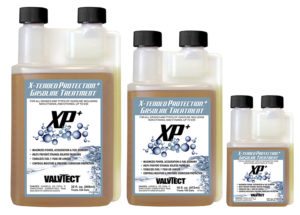
However, with the new administration in the executive branch and a Republican-controlled Congress, fuel additive manufacturers are confident that won’t be a concern. E10 will still be around, but E15 will not be as widespread as E10 has become.
“The good news is it seems with the new administration that the push to E15 will be slowed down a little bit, which is obviously great for boating because we can’t survive in an E15 environment,” said Dornau. “E15 will be available, but it won’t be shoved down our throats like what was going to happen with the other administration.”
On the flip side, Dornau said there was still a large proliferation of ethanol-free fuel under the old administration, and he thinks that could diminish under the new administration.
“The new administration is committed to the ethanol market and the fuel market, I would say, and they’re going to want to continue to support those E10 levels, and somehow they’re going to be able to offset not pushing E15 [by reducing] the availability of E0,” he said. “So as they move those levers, it could affect boaters because boaters are the ones that benefit from E0.”
Additives still important
Whatever fuel becomes more accessible to boaters – whether it’s ethanol, isobutanol or ethanol-free fuel – those customers still need to be using fuel additives that stabilize the fuel and strengthen the longevity of the fuel systems.
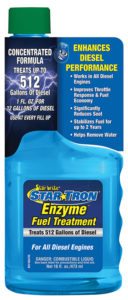
“Additives for boats have never been more important with the quality of the fuel,” said Dornau. “The fleet [in the automobile industry] has never been newer, so in some cases they don’t have the same requirements that boats do, as far as the levels of detergents. So even top-tier fuel that you get at the top gas stations … doesn’t really cut it for boats.”
As a result, fuel additive companies have changed their messaging from the dangers of ethanol to the need for additives regardless of fuel type. Consumers may not be as aware of the need for fuel additives now that the phase separation “catastrophes” caused by ethanol 10 years ago have plateaued or declined.
“We do see the need to tweak that and reeducate [or] remind consumers that even though they may be finding ethanol-free fuels and they’re finding they’re going back to the old norm, that gasoline – regardless of if it’s ethanol or not – we have to remind them that it still goes bad,” said Matthew Wing, brand manager of Sta-Bil. “Even though you might be avoiding the ethanol problem or that you are aware of the ethanol problem, there are still other fuel management topics and issues out there that we want to address and remind them that you want to always stay protected.”
New markets for fuel additives
As the repair issues in the ethanol market have leveled off, a new focus for additive manufacturers is the diesel market, where issues of cross-contamination have produced similar corrosion problems the gasoline industry was facing 10 years ago.
The Environmental Protection Agency released a report on corrosion inside diesel fuel underground storage tanks, finding that ethanol was present in 90 percent of 42 samples of USTs.
“It’s the same thing we’re dealing with ethanol [in gasoline] – excess water, excess sludge, slightly more corrosion – where before we didn’t think diesel had these problems,” said Dornau. “From an additive supplier that’s something we’re really focused on too, is going after some of that diesel market.”
The traditional Star tron diesel formula is designed to handle the same enzyme technology that works in E10, which should help with cross-contamination issues.
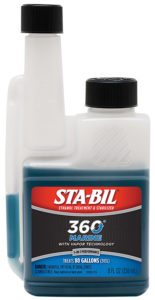
“It’s more of a marketing challenge to go out there and educate the same way we had to educate the consumer on how to handle E10,” Dornau said, “and my opinion of the success that the industry’s had. We need to take that concept and we’ve got to focus it on diesel now.”
ValvTect upgraded its diesel product to include corrosion guard technology, which Griffin says is a further enhancement of the company’s stabilizers, moisture control and anti-corrosion properties.
“We felt it was important to take ValvTect fuels further and way beyond any norm that’s available out there so that we do have ‘the best diesel fuel’ when formulated with our additives for the marine industry,” he said.
A new additive market Sta-Bil has entered is in metal corrosion outside of engines. The company is introducing its Rust Stopper this year, which is an oil-based product consumers can spray on exposed metals like trailers, trailer hitches, under-the-wheel bearings or anywhere metal is exposed to the elements.
“It stops any existing rust that might be there, really integrates with the metal, and then it coats it and protects it for up to a year, maybe longer depending on what kind of environment you’re putting it into,” said Wing.
Sta-Bil is reaching this market to enhance its portfolio to be beyond fuel because the company sees opportunities for growth.
“We’ll always be the experts in fuels [and] we want to remain the experts in fuel. We want to also extend our product line out into other avenues, similar to Rust Stopper,” said Wing. “We’d like to continue to branch out and fuel products that are not related to fuel, and continue with that mantra of protecting their investment.”
Isobutanol
When isobutanol came to the marine market, there was reasonably a lot of excitement: a biofuel that would meet the Renewable Fuel Standard requirements and keep boat systems safe. What could be better?
To ensure the fuel was as ideal for a marine environment as it was marketed, ValvTect ran a yearlong test to look at stability, performance issues and other quality control to ensure the product didn’t fall apart and it was compatible with ValvTect’s additives. The company got in touch with Gevo, the producer of isobutanol, and tested the fuel to confirm ValvTect’s additives reacted similarly in isobutanol as they do in E10.
The result was that ValvTect can verify its additives work in isobutanol as they do in E10, which led to ValvTect and Gevo making a joint announcement in 2016 that they endorse the use of their products together, sharing the message that both products are needed for an efficient fuel system.
“The key is that no matter whose additive you use … that you do treat your fuel for stability, anti-corrosion, moisture control, and with the detergents that push it to the highest level of performance similar to top-tier on land,” said Griffin.
When it comes to opinions on the expansion of isobutanol, fuel additive suppliers would like it to progress as it would be positive from an environmental aspect. However, their outlook on if this will ever come to pass is bleak.
“My personal opinion is that our corn lobby [in the United States] is so entrenched in the government and there’s been such an investment in ethanol coming out of corn, that it’s going to be really hard to get that train to switch tracks, so to speak,” said Dornau. “There’ll be some pockets that pop up like we’re seeing and there’s a few people embracing it, but for right now when it comes to gasoline, it’s ethanol and it’s going to be ethanol for our future.”


